It was not the direction I thought the conversation would take.
My assumption was that it would be completely clinical and unemotional.
Instead, to my astonishment, it was one of the most connected moments I’ve ever felt with another human being.
Oddly, it was with a sales representative when I was upgrading my accounting software.

Confused about whether I needed multiple accounts for projects or just one account with various sub-accounts, I jumped on a free call which I assumed would take about 5 minutes.
Instead, the representative went through each of my projects as separate businesses, listening to me describe each one in great detail.
It was a conversation about possibilities—where I shared the highest vision for each endeavor and best-case scenarios—and also about challenges, where I revealed all that could go wrong.
Throughout, the representative mostly listened, asking a few clarifying questions.
The super-focused conversation took over an hour.
After I finished, the rep asked if he could recap to make sure he understood everything completely.
When he finished, he asked if he had adequately summarized my situation.
Intensively moved, I simply replied:
Honestly, Kevin from Quickbooks—
I feel that no one in my life has ever understood me better
than you do in this moment.
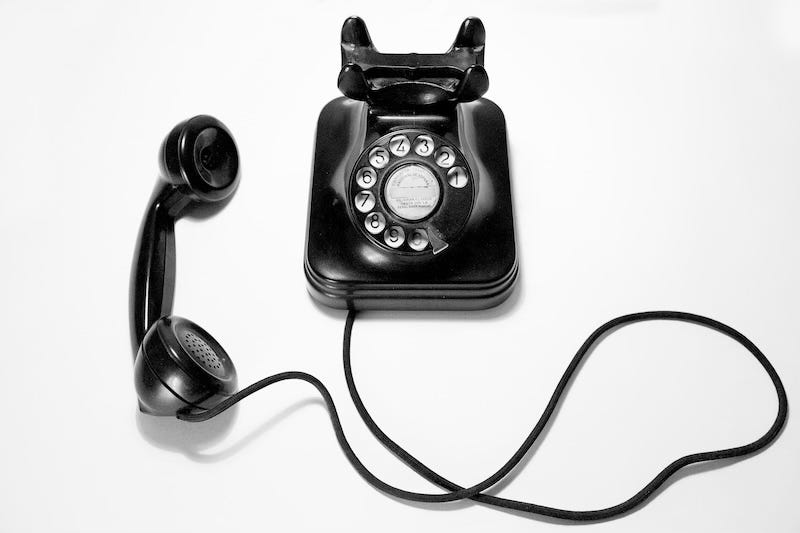
Here’s why the conversation was so powerful:
In the past, I’ve often scoffed at the technique of mirroring, employed in conversations with everyone from MBA consultants to marriage counselors to Gestalt therapists asking you to speak to an empty chair.
Yet somehow, having another person—in this case a complete stranger—reflect back to me the complete picture of my life was exactly what I needed.
In that moment, more than I realized, I truly needed a mirror.
Thus, it’s inspired this month’s new meditation HERE and theme: The Mirror.

Sidebar:
I wish there were a way I could make money from this—perhaps my greatest creative innovation—yet I feel there’s no way to trademark or copyright the concept.
Specifically, years ago with my chocolate lab Belle, I began to hang several “dog mirrors” around the apartment at her eye level.
She was just so beautiful, I felt it was a shame that she could never see herself.
They proved to be quite the success, as you’ll see below.
(I also have a hilarious video clip of Vlad being startled by his reflection in that same mirror during his first few moments in our apartment, a still of which is also below.)

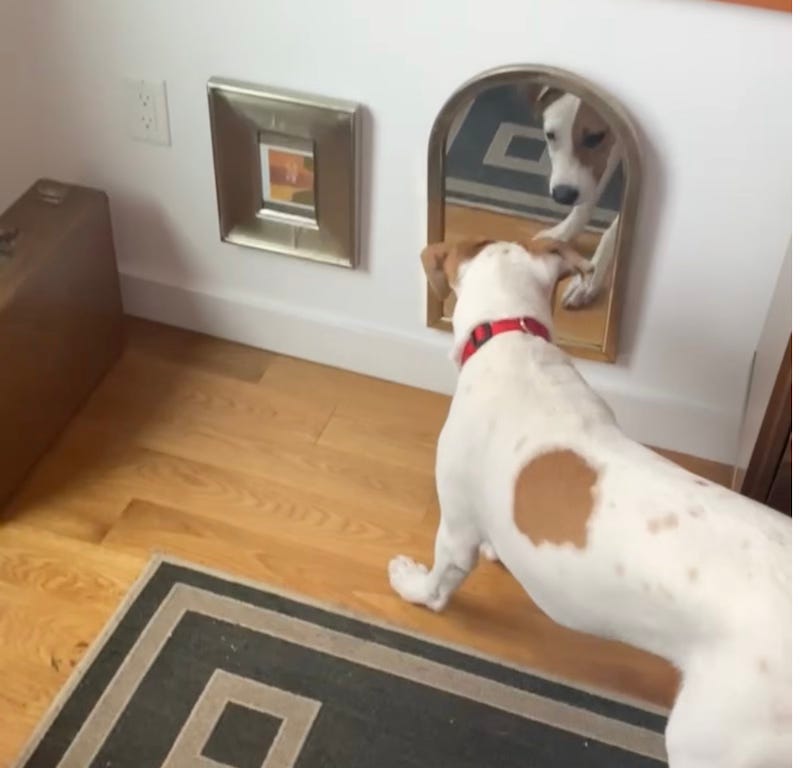
I’ve had a similarly unnerving experience lately, as last month I finished an intense 40-Day Mirror Meditation experiment, something that informed this month’s new meditation and theme as well (again, HERE).
Here’s where it gets strange, though—and forgive the unavoidable pun—but it starts to reflect back on itself.
For various quirky reasons, I started looking at my Mayan astrology again, something I haven’t thought much about since a trust-fund hippie offered me a free reading during a yoga retreat I was leading in Guatemala twenty plus years ago.
I remembered that my fundamental sign was White Dog and that would always be constant, but I wasn’t aware that after various 13 and 26 year periods, you enter new phases and influences.
And… in a perfect synchronicity, the period I’m in now is The Knife, also called The Mirror.
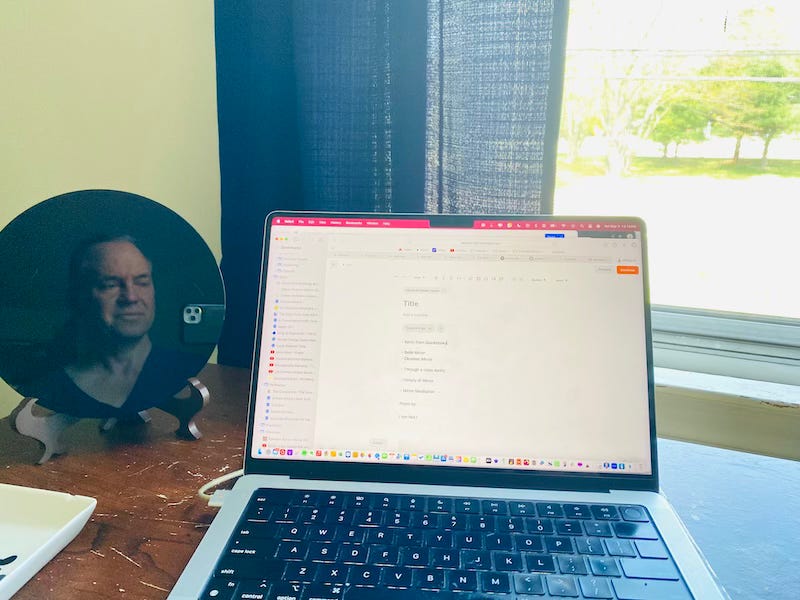
This week I bought the above obsidian mirror, which now sits on my writing desk.
As a retired altar boy, I’m reminded, of course, of St. Paul’s lines that in this world we are always and at best “looking through a glass, darkly.”
Obsidian is the traditional Mayan material for the knife, but what I didn’t realize is that it’s also the substance of the world’s first mirrors, dating back to 6,000 BCE in what’s now modern day Turkey.
I also didn’t know that obsidian is formed when magma from volcanoes cools very rapidly, without time for crystals to form.
Instead, a smooth shiny surface results.
Like the ultimate Instagram filter, it reflects reality back to you in a way that’s somehow more mysterious yet true.
As Kim Krans writes in her Archetypes Guideboook:
We look into mirrors every day without recognizing
them as portals into another realm.
They can shatter, flatter, distort, reflect
and project an image back to us that we deem to be true.
Recognize the power and danger of The Mirror.
It is a construct, one that may drive a shard between you and your true self.
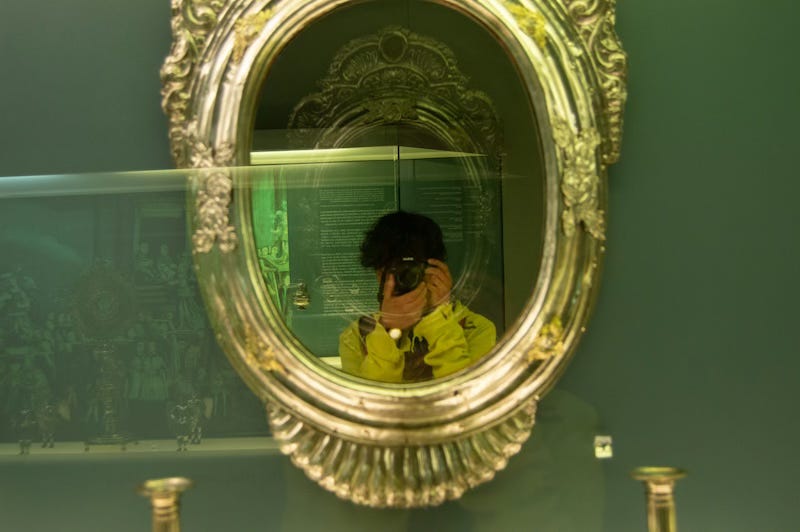
Louise Hay and others have used mirror work to reframe various self-concepts in a more positive light.
Hay believed that the mirror is a powerful tool for self-love, encouraging people to confront themselves lovingly and honestly by using affirmations while gazing into a mirror—especially into their own eyes.
The practice I completed went in a different, perhaps deeper direction.
Looking into the mirror, one was invited to question the very existence of the self (concept) staring back at you, asking, “Who am I really?”
The answers to that question can be quite mind-blowing.
Indeed, this trippy quality is beautifully captured by the poet Juan Ramon Jimenez in his fittingly titled work “I Am Not I.”
I am not I.
I am this one
walking beside me whom I do not see,
whom at times I manage to visit,
and whom at other times I forget;
the one who remains silent while I talk,
the one who forgives, sweet, when I hate,
the one who takes a walk when I am indoors,
the one who will remain standing when I die.
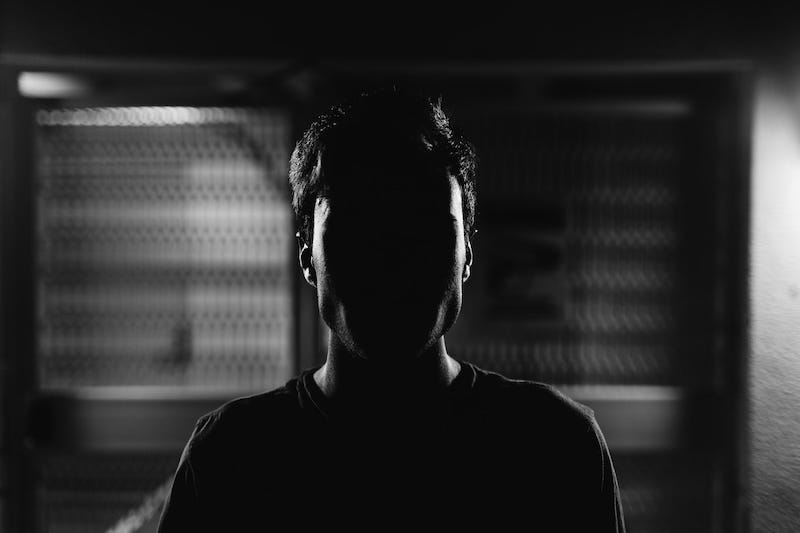
Throughout history, mirrors have served as metaphors in literature, religion, and psychology.
These range from Plato’s Allegory of the Cave as a way of defining illusion vs. reality, to Buddhism’s likening of the mind to a clear mirror—one that’s free from distortion when enlightened.
One of my favorite teachers, Bashar, goes even further stating that:
Physical reality is actually a mirror:
Your physical reality is just a reflection
of what you most strongly believe to be true.
And like a mirror, physical reality
will not change unless you change first.
As perhaps my favorite example of this, Bashar goes on to say:
If you look in a mirror and see your reflection is frowning,
you don’t go over to the mirror and try to make the reflection smile
—you know that the only way to get
the reflection to smile is to decide to smile first.
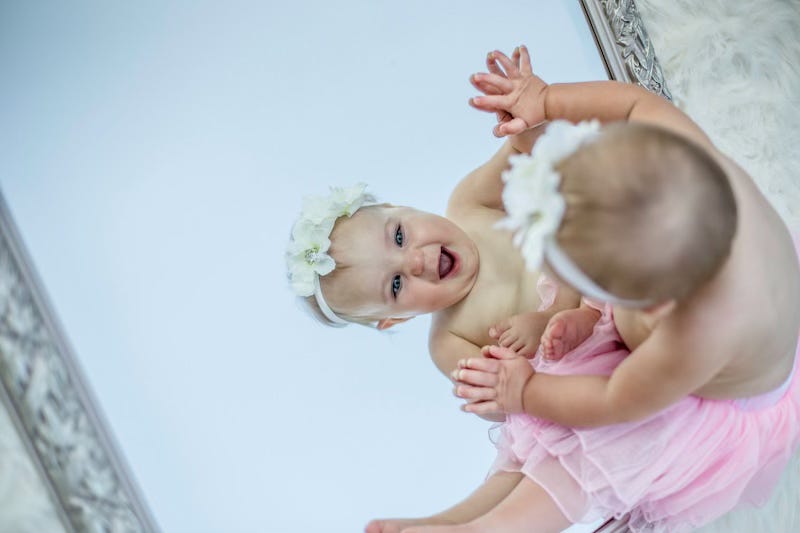
The above truth—rather than waiting for the “man in the mirror,” that I have to be the one who smiles first—is beyond obvious, yet something for which I need a frequent reminder.
As the myth of Narcissus falling in love with his own reflection and drowning illustrates, Mirrors can entrap us, but they can also lead us to freedom.
They can be our pathway to a better understanding of not only our own psychology but also, perhaps, our conception of the world around us.
We may always be “looking through a glass, darkly” at this reality, and that can be as startling as it was for Vlad or as comforting as I hope it was for Belle.
I will probably never reconnect with Kevin from QuickBooks again, but I won’t ever forget those moments where he perfectly reflected back to me all my hopes and fears, all my dreams and challenges.
Moved, he told me that mine was the best compliment he had ever received, no doubt because I was reflecting him back to him the same clarity and generosity he’d extended to me.
Rather than getting lost in a hall of mirrors, we were amplifying each other, each fully seen and understood.
For me, this is the embodiment of the ending to almost every yoga class: “Namaste”—usually poetically translated as “the light in me bows to the light in you.”
Ultimately, that’s the real gift of any mirror (glass, obsidian, or human): an invitation to recognize—and remember—who we truly are.

